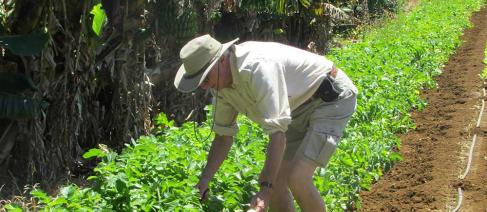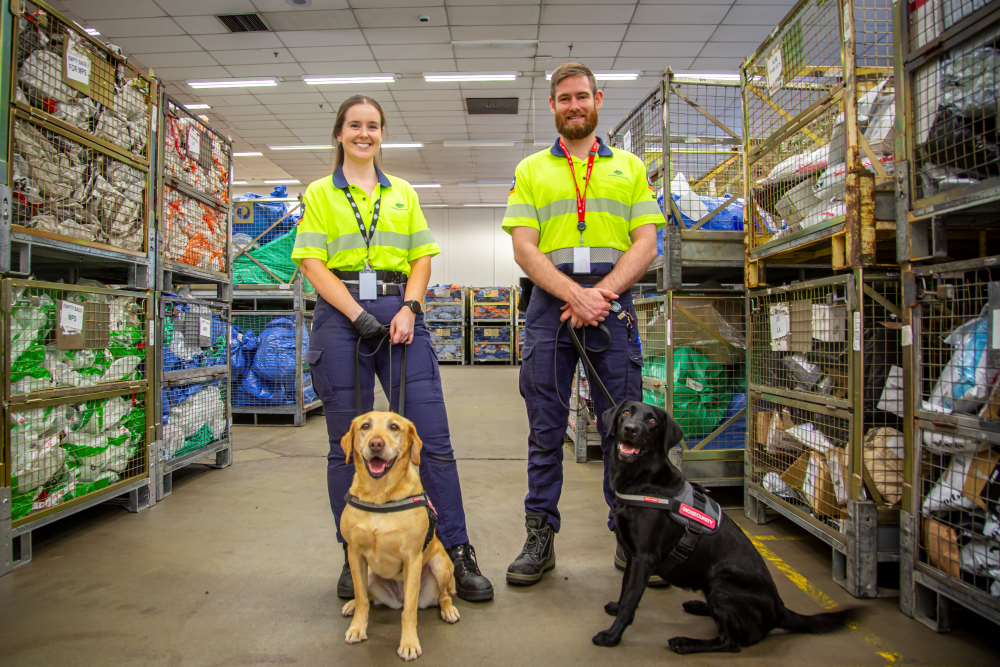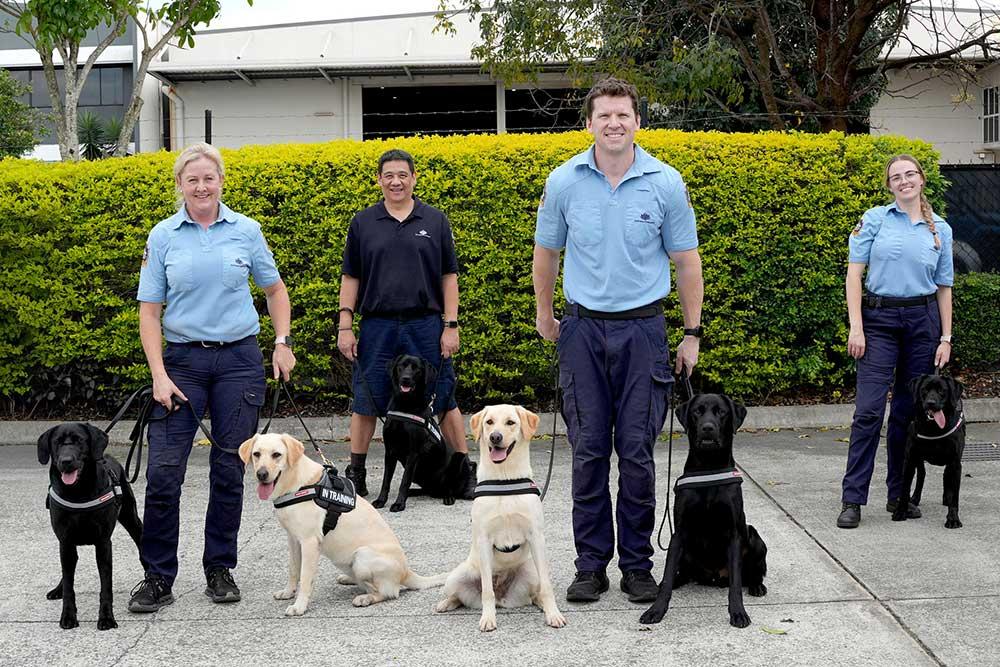Dr Laurence Mound
Dr Laurence Mound is a taxonomist who has made significant contributions to Australia’s biosecurity and entomology during his career. He is a world-leading authority on the minute insects called thrips (Thysanoptera), many of which are known as crop pests and vectors of plant viruses.
Dr Mound has worked on several insect groups throughout his career but his contribution to the study of thrips has been most significant, demonstrated by his discovery and description of more than 600 species. Through this work, he revolutionised the understanding of thrips diversity around the world, particularly in Australia.
Thrips have moved across the world and continue to do so through wind, in flowers, on produce or via hitchhiking and there are many introduction pathways to Australia. Exotic species, subspecies and thrips vectors remain significant targets for Australia’s border inspection and surveillance.
Dr Mound has a vast number of published works and his resources and related thrips publications are visited daily by biosecurity workers all around the world. Dr Mound worked with fellow entomologist Desley Tree to produce the core resources for any entomologist studying, identifying, researching, or perusing Australian thrips. These are both freely available online and include Thysanoptera Australiensis – an identification and information system to thrips in Australia, and Tubulifera Australiensis – a similar system to the Phlaeothripidae genera in Australia.
Dr Mound’s early adoption of interactive, computer-based identification keys was showcased when he developed a CD-ROM for the then Australian Quarantine and Inspection Service on Thysanoptera of quarantine importance to Australia. These keys were a driver of this technology, becoming one of the most used platforms for identification keys today. He has also produced similar information systems that help identify intercepted thrips. These systems have been issued for the known species of Britain, California, China, New Zealand and Timor-Leste.
His contribution to preparedness and response for plant health is demonstrated through his training, tuition, resource development and direct support. For example, Dr Mound hosted 3 young entomologists who went on to hold key roles in biosecurity laboratories, train others, present internationally, expand thrips collections and produce publications. Dr Mound’s influence is evident in every entomology lab in Australia in advancing Australia’s plant health status, whether specimens in the collection, the inquiring questions of a policy maker, or the use of the upside-down slide mounting technique he taught to others.
Dr Mound has excelled in strengthening scientific capacity and capability both domestically and internationally. His countless identification courses and co-authored scientific papers have proven invaluable for biosecurity policy and operational staff.
Dr Mound’s work has had a significant and important influence on biosecurity. His work in Australia discovering and describing thrips species has laid the groundwork for the presence and absence of species, and ability to justifiably apply biosecurity measures on specific pathways.
Dr Laurence Mound was nominated by Luke Watson from the Department of Agriculture, Fisheries and Forestry.
Watch a video about their work
Introduction
This is the accessible text transcript of a 2024 Australian Biosecurity Awards winner video featuring Dr Laurence Mound.
Transcript
My reputation as an entomologist is based on my studies of the minute insects called thrips. But I started my professional career in 1958 with 6 years studying whitefly on crops in Trinidad, Nigeria and Sudan. This agricultural background influenced my approach to taxonomy throughout my subsequent 30 years in London at the Natural History Museum. In addition to formal taxonomic studies on whitefly and thrips, I produced publications aiding pest identifications by people working in agriculture, horticulture, and quarantine.
My studies involved work in various Southern Hemisphere countries, including 12 months in Australia in 1967, funded by CSIRO. However, I continue to be employed in London with my last 10 years as head of the museum's Department of Entomology. This gave me many professional contacts who on my retirement, provided opportunities for me to continue studying thrips in several countries, including Australia.
I settled in Canberra in ‘96. Where CSIRO offered me an honorary research fellowship. I intended to study the diversity of Australian thrips, but also developed a parallel research team to facilitate pest thrips species identification by known specialists. With a colleague in Germany, we published an interactive identification and information system for Australian quarantine on pest trips. Subsequently, I applied this web-based communication system not only to the highly diverse Australian fauna, but also to the thrips fauna of New Zealand, Timor-Leste, southern China, California, Brazil and Britain. All are potential sources of pests for Australia. As a result, biosecurity staff in Australia now have available to them systems on their computers, fully illustrated, that will identify most thrips species that are being recorded as pests around the world.
These studies have had much support from the Department of Agriculture, including extensive work in Norfolk Island, as well as the Tiwi and Torres Strait Islands, and also Nouvelle Calédonie. I am particularly grateful to Luke Watson of Northern Australian Quarantine in Darwin for nominating me for recognition of my contribution to Australian biosecurity.
Thank you.




